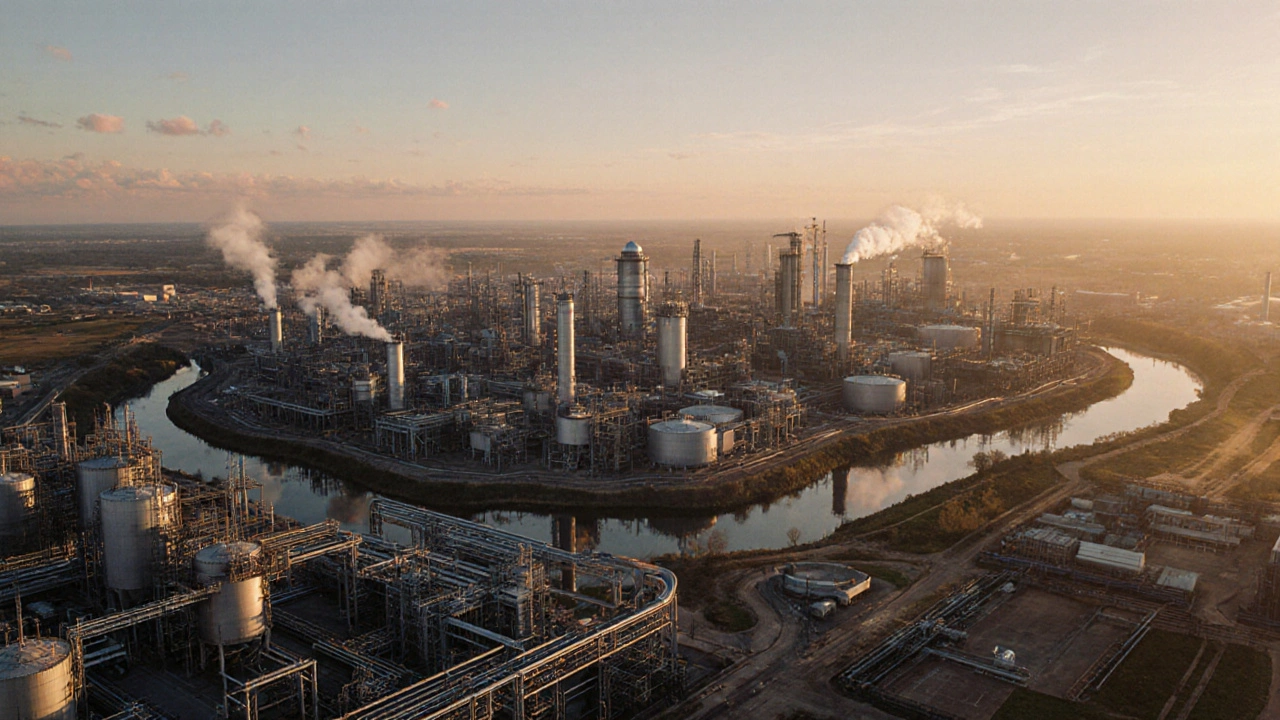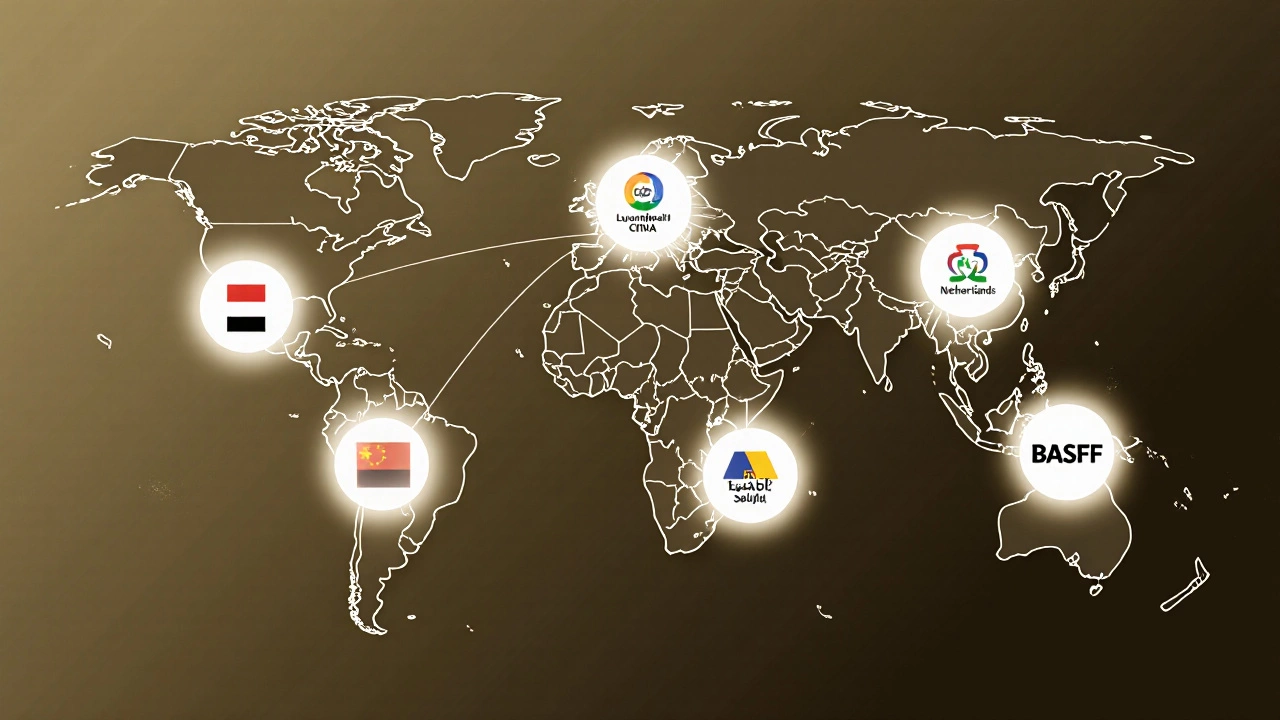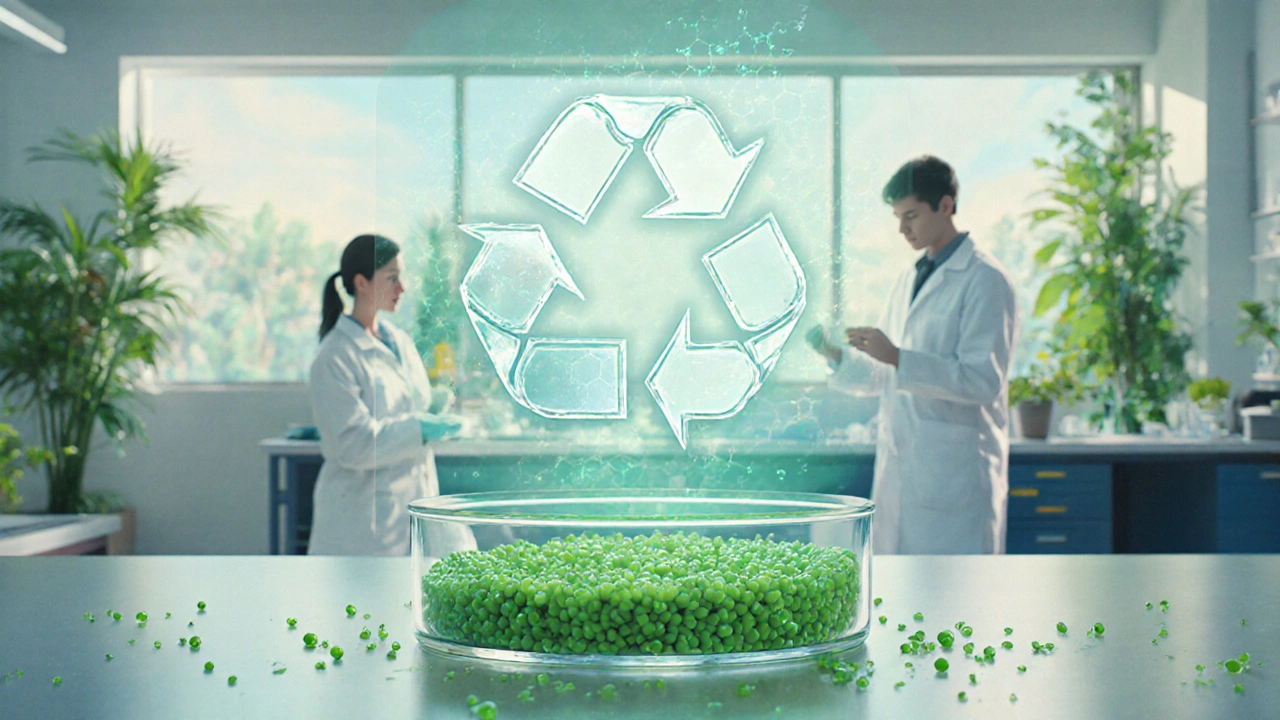World's Largest Plastic Supplier - Who Leads the Global Market?

Plastic Production Calculator
Plastic Usage Calculator
Your input:
Equivalent to:
Note: Production figures are from 2024 industry reports. These comparisons are for perspective only.
When you ask yourself who dominates the flow of plastic that ends up in everything from grocery bags to car dashboards, you’re really looking for the company that pumps out the most polymer tonnes each year. In 2024 the race is tight, with a handful of giants sharing the bulk of the world's supply.
How the "biggest supplier" is measured
Before naming the leader, it helps to know what we’re counting. The most common metric is annual plastic production volume, reported in million metric tons. Analysts also look at revenue from polymer sales, geographic reach, and the breadth of product families (polyethylene, polyvinyl chloride, polypropylene, etc.). Those figures are usually disclosed in annual reports or industry surveys such as the PlasticsEurope 2024 Outlook.
Top global plastic manufacturers in 2024
Below is a snapshot of the six companies that together generate over 60% of the world’s plastic output.
| Company | Plastic Production (million t) | Revenue from Polymers (USD bn) | Key Plastic Types | Headquarters |
|---|---|---|---|---|
| Dow Inc. is an American chemical giant with a diversified polymer portfolio | 53.2 | 28.5 | PE, PP, PS, ABS | Midland, Michigan, USA |
| LyondellBasell Industries a Dutch‑based leader in polyolefins | 44.7 | 22.1 | PE, PP, EVA | Rotterdam, Netherlands |
| Sinopec China’s state‑owned oil and chemicals behemoth | 42.5 | 30.3 | PE, PVC, PET | Beijing, China |
| SABIC Saudi Arabia’s petrochemical powerhouse | 39.8 | 27.9 | PE, PP, PVC, PET | Riyadh, Saudi Arabia |
| ExxonMobil Chemical the chemical arm of the U.S. oil major | 35.4 | 24.0 | PE, PP, PTFE | Irving, Texas, USA |
| BASF Germany’s biggest chemical producer | 31.1 | 21.3 | PE, PP, PA, PET | Ludwigshafen, Germany |
By sheer production volume, Dow Inc. sits at the top of the list, edging out LyondellBasell and Sinopec. The gap, however, is narrow enough that market dynamics-commodity price swings, capacity expansions, and shifts toward recycled resin-can shuffle the ranking from year to year.
Why size matters for buyers and investors
Large suppliers enjoy economies of scale that translate into lower per‑ton costs, broader R&D budgets, and more resilient logistics networks. For manufacturers needing reliable feedstock, partnering with a top‑tier player reduces the risk of supply interruptions. Investors watch these giants because their earnings are tightly linked to global demand for packaging, automotive parts, construction materials, and consumer goods.

Regional footprints and supply chain reach
All six firms operate sprawling production complexes across three continents. Dow’s North American hub, LyondellBasell’s European polyolefin sites, and Sinopec’s massive Chinese complexes together form a web that can reroute product flow when a plant goes offline. This geographic diversity is a key factor in why they dominate the market: they can serve customers in the Americas, Europe, and Asia without relying on third‑party transporters.
How the leading supplier influences industry trends
Being the biggest producer gives Dow a platform to steer innovation. In 2023 the company announced a 1.2‑million‑ton commitment to recycled polyethylene, nudging the entire sector toward circularity. LyondellBasell has invested heavily in bio‑based polyolefins, while Sinopec is expanding its PET bottle‑to‑bottle recycling capacity. The strategies of these market leaders often become the benchmark for smaller players.

Choosing a plastic supplier for your business
- Volume needs - If you require millions of tons per year, a top‑tier supplier can meet that demand with consistent quality.
- Product range - Identify whether you need specialty grades (e.g., flame‑retardant ABS) or commodity polymers (PE, PP).
- Geographic proximity - Closer plants mean lower freight costs and quicker lead times.
- Sustainability commitments - Many customers now ask for recycled content or carbon‑neutral production; check the supplier’s ESG reports.
- Pricing stability - Large firms often offer long‑term contracts that lock in prices, protecting you from market volatility.
Future outlook: recycling, bio‑plastics, and new entrants
The plastic landscape is shifting. The European Union’s 2025 single‑use plastic ban, combined with rising consumer demand for recycled goods, is prompting the biggest suppliers to invest in circular solutions. Bio‑based plastics-like PLA and PHA-are still a small slice of total production, but companies such as BASF and SABIC have announced multi‑billion‑dollar roadmaps to scale them.
Start‑ups focusing on chemical recycling (e.g., Loop Industries) could chip away at the dominance of the traditional giants, especially if regulations reward low‑carbon resin. Yet, the capital intensity of building a new polymer plant means the top six will likely stay in the lead for the foreseeable future.
Quick reference checklist for evaluating plastic suppliers
- Annual production volume (million t)
- Revenue from polymers (USD bn)
- Geographic coverage and logistics network
- Portfolio breadth - commodity vs. specialty grades
- ESG performance - recycled content, carbon footprint
- Contract flexibility and pricing mechanisms
Which company produced the most plastic in 2024?
Dow Inc. led the world with roughly 53 million metric tons of polymer output, making it the largest supplier by volume.
How is "biggest supplier" different from "largest revenue"?
Production volume measures how many tons of plastic a company actually makes, while revenue reflects the money earned from selling those polymers. A firm could have high revenue from high‑margin specialty grades but lower total tonnage.
Are the top plastic suppliers investing in recycled plastics?
Yes. Dow announced a 1.2 million‑ton recycled polyethylene target, LyondellBasell is expanding its chemical‑recycling capacity, and Sinopec is scaling PET bottle‑to‑bottle projects.
What factors could dethrone the current market leader?
Major factors include sudden capacity expansions by rivals, tighter environmental regulations that favor low‑carbon resin, and breakthrough chemical‑recycling technologies that reduce the need for virgin polymer production.
How do regional regulations affect the supply chain?
Europe’s single‑use ban drives manufacturers toward recycled content, while Asia’s growing construction markets boost demand for commodity PE and PP. Suppliers with plants close to regulated regions can adapt faster.